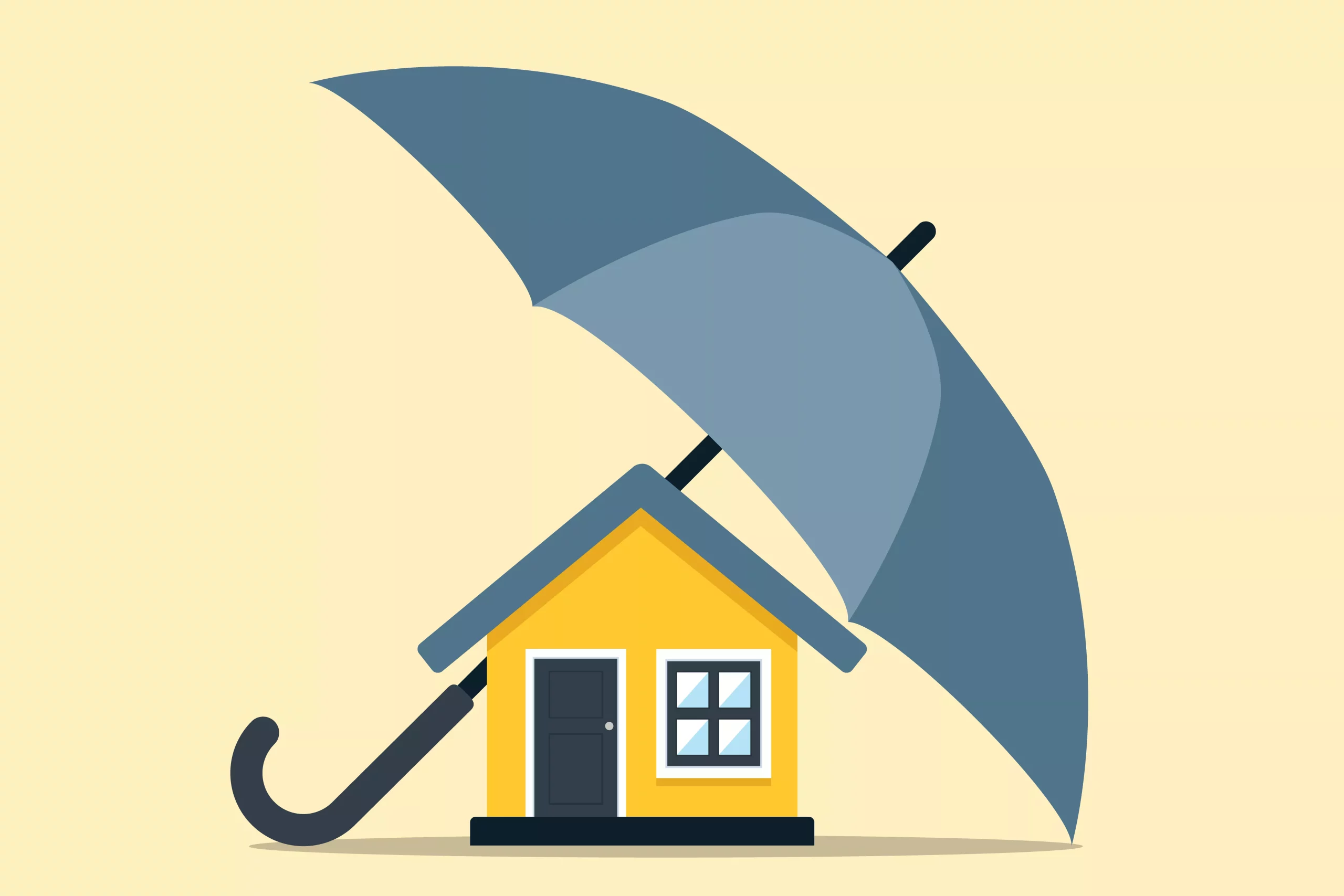Home insurance is a vital component of homeownership, offering financial protection against various risks and uncertainties. Understanding what you can claim on your home insurance policy in the USA can help you maximize your coverage and ensure you are adequately protected. This article will explore the types of claims you can make, the process for filing a claim, and tips for managing your home insurance effectively.
Understanding Home Insurance Coverage
Basic Components of Home Insurance
Dwelling Coverage
Dwelling coverage protects the structure of your home, including walls, roof, and foundation, against damage from covered perils such as fire, wind, hail, and vandalism.
Personal Property Coverage
Personal property coverage insures your belongings, such as furniture, electronics, and clothing, against theft, damage, or loss due to covered events.
Liability Coverage
Liability coverage protects you against legal liability for injuries or property damage that occur on your property. It covers legal fees, medical expenses, and damages if you are found responsible.
Additional Living Expenses (ALE) Coverage
ALE coverage provides financial assistance for temporary living expenses if your home becomes uninhabitable due to a covered event. This includes costs for hotel stays, meals, and other necessary expenses.
Types of Claims You Can Make on Home Insurance
1. Damage to Your Home
Fire and Smoke Damage
You can claim repairs or rebuilding costs if your home is damaged or destroyed by fire. Smoke damage, which can affect walls, furniture, and other belongings, is also covered.
Water Damage
Water damage claims are common and can result from burst pipes, leaks, or flooding. Coverage typically includes the cost of repairs and replacement of damaged property.
Wind and Hail Damage
Wind and hail can cause significant damage to your home’s exterior, including the roof, siding, and windows. Home insurance covers the repair or replacement of damaged structures.
Vandalism and Theft
If your home is vandalized or items are stolen, you can claim the cost of repairs and replacement of stolen property.
2. Damage to Personal Property
Theft of Personal Belongings
Home insurance covers theft of personal belongings, whether stolen from your home or elsewhere. This includes items such as electronics, jewelry, and clothing.
Damage to Personal Property
Damage to personal property from covered perils, such as fire, water, or vandalism, can be claimed. This includes damage to furniture, appliances, and other personal items.
3. Liability Claims
Injury to Others
If someone is injured on your property, liability coverage can help cover medical expenses, legal fees, and damages if you are found responsible.
Property Damage to Others
If you or a family member accidentally cause damage to someone else’s property, your liability coverage can help cover the cost of repairs or replacement.
4. Additional Living Expenses (ALE) Claims
Temporary Housing Costs
If your home is uninhabitable due to a covered event, ALE coverage can help pay for temporary housing, such as hotel stays or rental properties.
Additional Living Expenses
ALE coverage also includes other necessary expenses, such as meals and transportation, incurred while your home is being repaired or rebuilt.
see also:Top 10 Best Tenant Insurance Companies
Filing a Home Insurance Claim
1. Steps to Take After a Loss
Document the Damage
Immediately after a loss, document the damage by taking photos or videos. This evidence will be crucial when filing your claim.
Secure Your Property
Take steps to secure your property and prevent further damage. This may include boarding up broken windows or covering a damaged roof.
Notify Your Insurance Company
Contact your insurance company as soon as possible to report the loss and start the claims process. Provide them with all necessary information and documentation.
2. Working with an Adjuster
Schedule an Inspection
Your insurance company will send an adjuster to inspect the damage and assess the cost of repairs. Schedule this inspection as soon as possible.
Provide Documentation
Provide the adjuster with all necessary documentation, including photos, videos, and receipts for damaged or stolen items. This will help expedite the claims process.
3. Repairing and Replacing Damaged Property
Get Repair Estimates
Obtain estimates from reputable contractors for the cost of repairs. Your insurance company may require multiple estimates before approving your claim.
Complete Repairs
Once your claim is approved, you can begin repairs. Keep all receipts and documentation related to the repairs for your records.
Common Exclusions and Limitations
1. Exclusions in Home Insurance Policies
Flood Damage
Standard home insurance policies do not cover flood damage. If you live in a flood-prone area, you may need to purchase separate flood insurance.
Earthquake Damage
Earthquake damage is also not covered by standard policies. Separate earthquake insurance is required to cover this risk.
Wear and Tear
Normal wear and tear or damage resulting from lack of maintenance is not covered. Home insurance only covers sudden and accidental damage.
2. Policy Limits and Deductibles
Coverage Limits
Home insurance policies have coverage limits, which is the maximum amount the insurer will pay for a covered loss. Ensure your coverage limits are adequate for your needs.
Deductibles
A deductible is the amount you must pay out of pocket before your insurance coverage kicks in. Higher deductibles can lower your premiums but mean more out-of-pocket costs in the event of a claim.
Maximizing Your Home Insurance Coverage
1. Reviewing and Updating Your Policy
Annual Policy Review
Review your home insurance policy annually to ensure it still meets your needs. Update your coverage if you make significant improvements or additions to your home.
Increasing Coverage Limits
If your home’s value or the value of your personal belongings has increased, consider raising your coverage limits to ensure adequate protection.
2. Taking Inventory of Personal Belongings
Home Inventory List
Create a home inventory list of all your personal belongings, including photos, descriptions, and estimated values. This will simplify the claims process if you need to file a claim.
Update Inventory Regularly
Update your home inventory regularly to account for new purchases or items you no longer have. This ensures your records are current and accurate.
3. Bundling Insurance Policies
Benefits of Bundling
Bundling your home and car insurance policies with the same insurer can often lead to discounts and simplified management of your policies.
Compare Bundle Options
Compare bundle options from different insurers to find the best coverage and rates for your needs.
Tips for Managing Your Home Insurance
1. Maintain Your Home
Regular Maintenance
Regular maintenance can help prevent damage and reduce the likelihood of needing to file a claim. Address small issues before they become major problems.
Upgrades and Improvements
Upgrading your home’s systems, such as plumbing, electrical, and roofing, can reduce the risk of damage and may even lower your insurance premiums.
2. Understand Your Policy
Read Your Policy Carefully
Understand what your policy covers and what it does not. Familiarize yourself with any exclusions, limits, and deductibles.
Ask Questions
If you have any questions or concerns about your policy, don’t hesitate to contact your insurance agent for clarification.
3. Shop Around for the Best Rates
Compare Quotes
Regularly compare quotes from different insurance providers to ensure you are getting the best coverage at the most competitive rates.
Consider Customer Service
When choosing an insurer, consider their customer service reputation. Good customer service can make a significant difference in the claims process.
Case Studies: Real-Life Claims
1. Fire Damage Claim
Scenario
A homeowner experiences a kitchen fire that causes extensive damage to their home. They file a claim with their home insurance company.
Outcome
The insurance company covers the cost of repairs to the kitchen and replacement of damaged personal property. The homeowner also receives ALE coverage for temporary housing during repairs.
2. Theft Claim
Scenario
A homeowner’s home is burglarized, and several valuable items are stolen. They file a claim with their home insurance company.
Outcome
The insurance company reimburses the homeowner for the stolen items based on their home inventory list and provides funds for necessary repairs to doors and windows damaged during the break-in.
Conclusion
Home insurance in the USA offers vital protection for your home and personal belongings. Understanding what you can claim on your home insurance policy ensures you are prepared in the event of a loss. By knowing the types of claims you can make, the process for filing a claim, and how to maximize your coverage, you can protect your home and financial well-being effectively.
Regularly review your policy, take inventory of your belongings, and maintain your home to ensure you have the right level of coverage. With the right home insurance, you can have peace of mind knowing you are prepared for life’s unexpected events.
[inline_related_posts title=”You Might Be Interested In” title_align=”left” style=”list” number=”6″ align=”none” ids=”3332,3244,3227″ by=”categories” orderby=”rand” order=”DESC” hide_thumb=”no” thumb_right=”no” views=”no” date=”yes” grid_columns=”2″ post_type=”” tax=””]





















